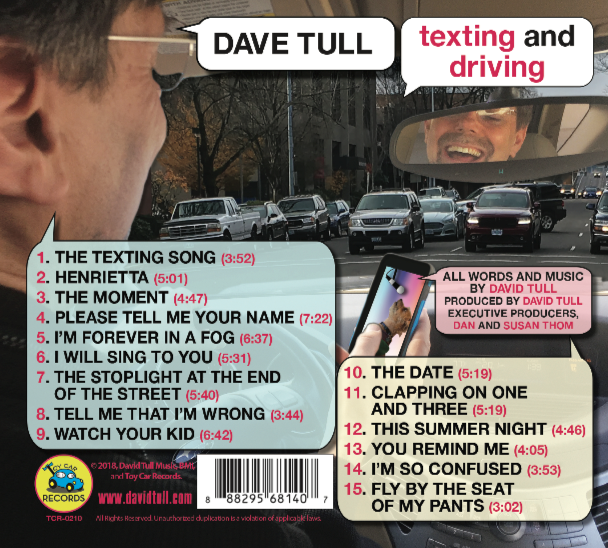Tom Nagy and Jonathan Dietrich had an interesting conversation a few years ago.
What about writing a new version of Shakespeare's "Merchant of Venice," this time set in the 1930s featuring a jazz score?
Dietrich could adapt the play, Nagy would write the music.
But it was one of those conversations that sparks enthusiasm, then gets pushed to the back-burner as life gets in the way.
Nagy, however, continued to be intrigued with the idea.
"Last year I poked (Dietrich) again and said 'Should this be a real thing?'... In a way we dared one another to go ahead with it," he said.
"He submitted a proposal to K-W Little Theatre and they said 'great.'"
Rather than being satisfied with just a stage production of their work, the pair went a step further, recording a CD of the music and planning a special release event at the Jazz Room, where they will perform music plus some scenes from the play.
There will also be a discussion about the salient points of Shakespeare's original work, particularly as it pertains to racism.
Even for those unfamiliar with Shakespeare's play, the storyline behind "Merchant of Venice" is well known and centred on Jewish money lender Shylock. Remember his moving speech, "Hath not a Jew eyes?" as he makes the point he is human just like everyone else in Venice.
Shylock is owed repayment on a loan but his client, a young Venetian named Bassanio, cannot come up with the cash.
Though the judicial system purports to be fair for all, in the end Shylock loses everything, his family, his wealth, all because of the greed of the predominately Christian ruling caste.
"It's twisted logic," said Nagy. "In the end, stripping Shylock of his wealth and he's forced to convert to Christianity."
The end of the play is performed without dialogue, emphasizing Shylock's plight as an outsider, a foreigner who is not being heard by the unsympathetic majority.
Nagy believes the themes of the play, written by Shakespeare as a comedy despite its depressing premise, is relevant in today's political climate.
"It's a universal theme of dominance," he said.
Nagy, a graduate of the Humber College music program, is a composer of music for television and film and he plays bass with the Gary Cain Band.
As well, Nagy serves as the technical director of the Jazz Room and he's always looking for unique projects.
But he has never taken on a challenge quite like this and he'll need some recovery time before starting another one.
The composer and the author did meet and discussed the basics of the story but then went to their separate corners to start the serious work.
Nagy took a slightly different approach in writing the score: He worked with the musicians, in some cases telling them what he wanted and in others, he gave them free rein and had some unexpected results.
Drummer Donnie MacDougall just started riffing in a drum solo. Nagy loved it —that was just the sort of inspiration he was looking to inject into the music.
"Joni NehRita singing and Jason White on piano, they knocked it out of the park," he said. "As an artist and composer, that's exactly what I hoped would happen."
Nagy was particularly pleased to be able to hire all local musicians, made possible because of a grant from the Waterloo Region Arts Fund.
"I hope it's an interesting experience, a different experience," said Nagy.
1. Prelude 02:34
2. Lester in Belmont, part I 02:59
3. The Hebrew Will Turn Christian 01:06
4. Lester in Belmont, Interlude 00:32
5. Venice 01:07
6. Out the Window, part I 02:54
7. Out the Window, part II 03:14
8. Out the Window, part III 04:00
9. My Ducats and My Daughter! 03:00
10. The Portrait of a Blinking Idiot 02:42
11. Entr'acte - Under The Greenwood Tree 01:25
12. On the Rialto 03:16
13. Lester in Belmont, part II 02:46
14. Tell Me Where 04:09
15. A Letter from Venice 04:13
16. Jailer, Look to Him 02:37
17. Hatching the Plan 02:03
18. The Trial - Entrance 00:35
19. The Trial - Why, This Bond is Forfeit 00:59
20. The Trial - And You Must Cut This Flesh 02:16
21. The Trial - The Law Hath Yet Another Hold On You 02:57
22. The Trial - I Am Content 03:30
23. Curtain Call (Tell Me Where) 02:44
Joni NehRita - vocals
Brent Rowan - clarinet, bass clarinet, tenor saxophone
Jason White - piano
Dan Beacock - guitar
Don McDougall - drums
Tom Nagy - bass
Recorded January 29th and 30th at the Jazz Room in Waterloo, Ontario, Canada, by Jeremy Bernard and Peter Beacock
Mixed, mastered and audio-wizarded by Peter Beacock
All artwork / design by Andrea Deering of AddStudio.ca





























